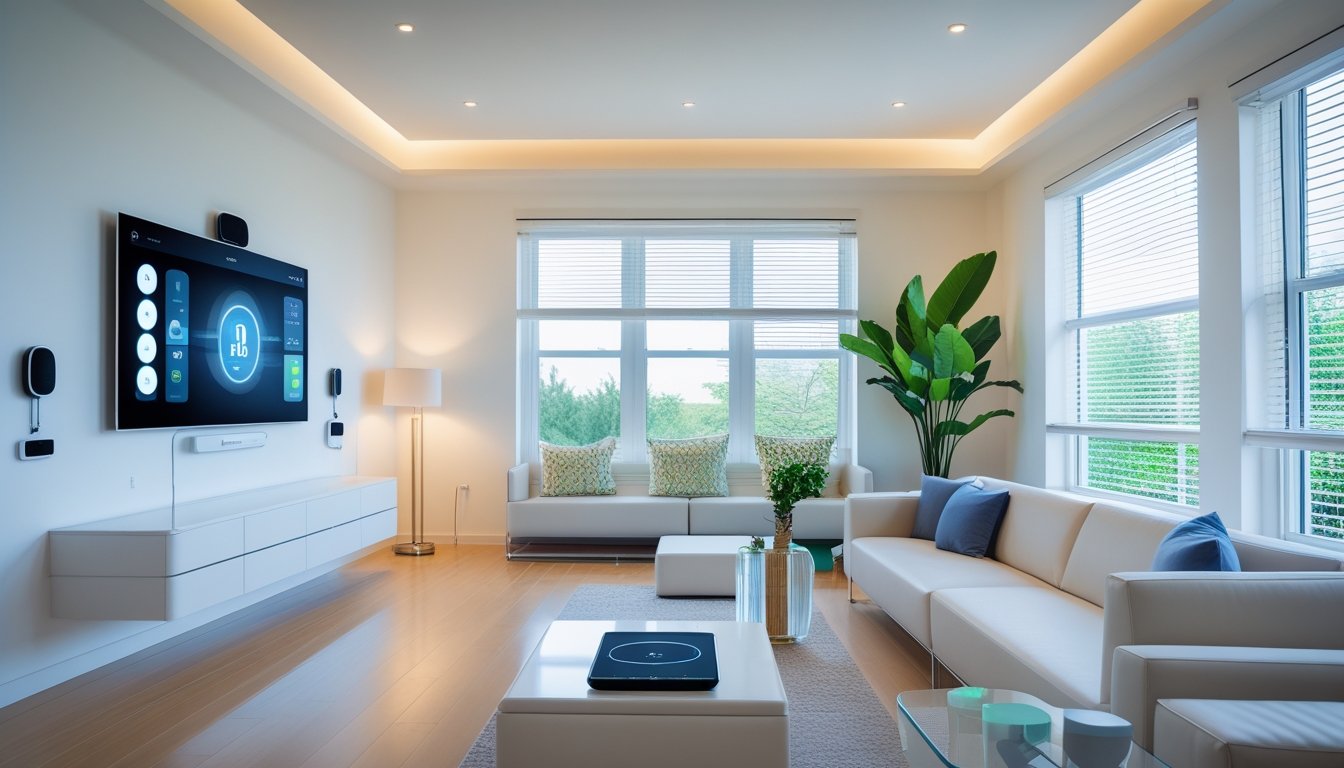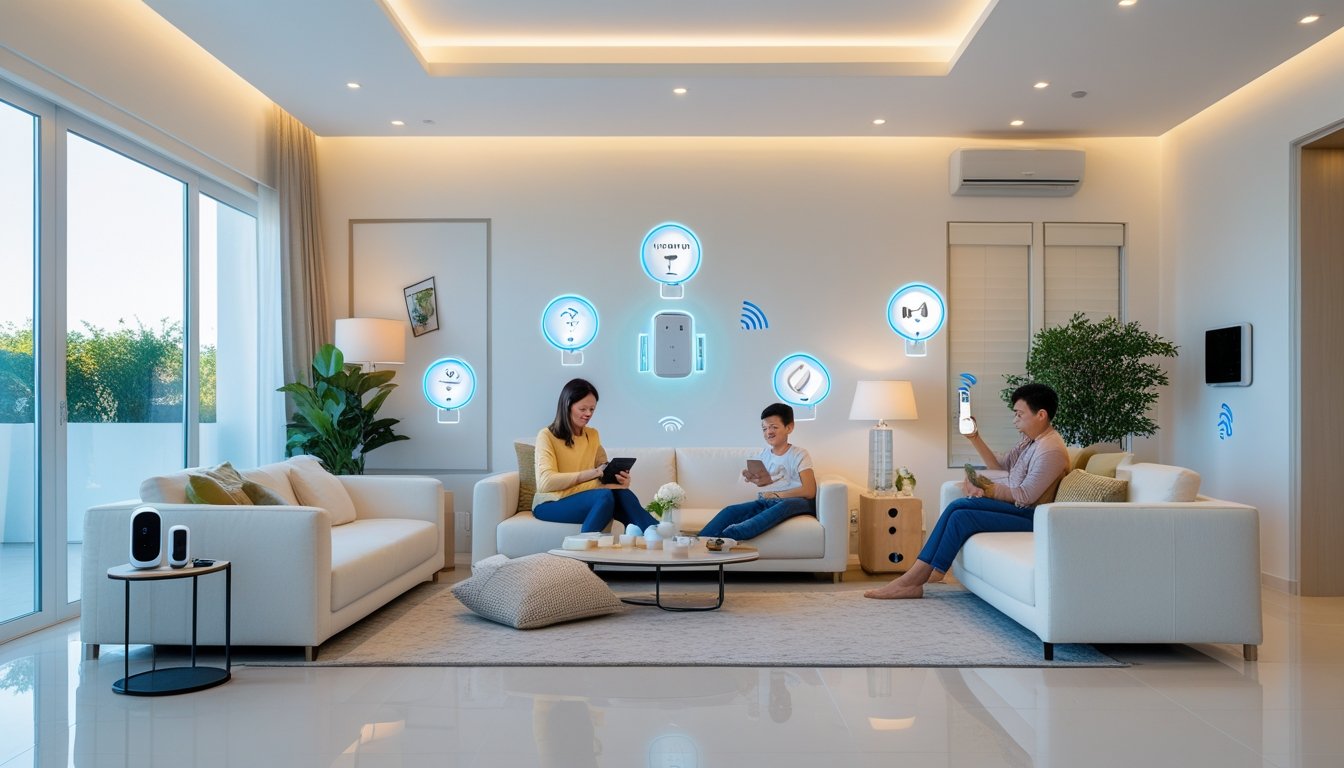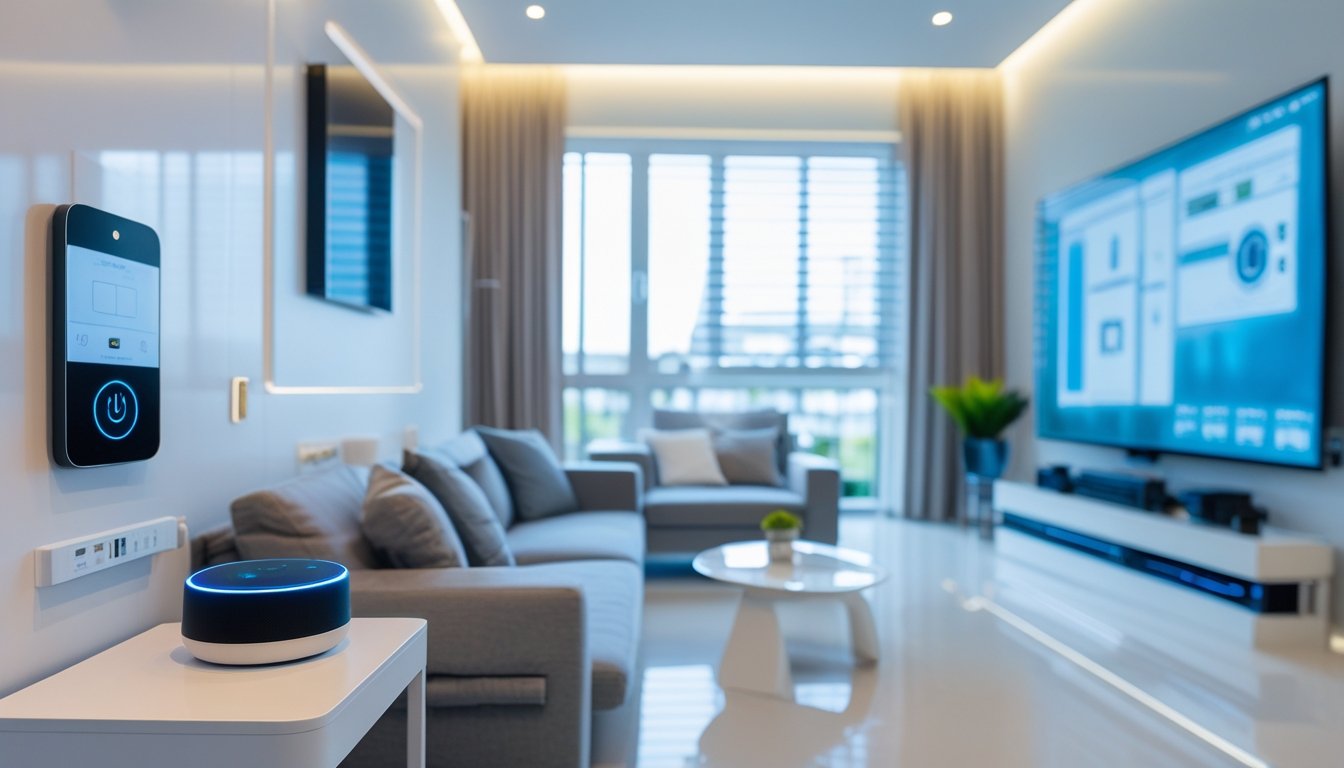Late updated: 16 Jul 2025 14:07
Written by: Daniel Harper
Innovative Smart Home Renovation Ideas: Transform Your Living Space
In today's ever-evolving technological landscape, our homes are not just where we live—they're becoming smarter. From voice-controlled lighting to intelligent security systems, the scope of home renovations has dramatically expanded. By integrating cutting-edge technology into our living spaces, we can create homes that offer enhanced comfort, efficiency, and security.

We're witnessing a transformation in how we interact with our environments. Smart thermostats learn our preferences, while energy-efficient lighting adapts to our schedules. Connectivity extends to every corner, transforming even the simplest tasks into seamless experiences. As we renovate, we have a unique opportunity to imbue our spaces with innovations that not only meet our current needs but also anticipate our future desires.
Smart home renovations don't just add convenience; they offer a glimpse into the future of living. This trend isn't just about high-tech gadgets; it's a holistic approach to creating harmonious environments that work for us. Let's explore how these inventive ideas can revolutionise our homes and enhance our daily lives.
Key Takeaways
- Smart renovations revolutionise home interaction.
- Connectivity enhances comfort and efficiency.
- Innovations anticipate future living needs.
Transformative Smart Home Renovation Ideas
Incorporating cutting-edge technology during a home renovation can drastically alter the way we interact with our living spaces. From advanced lighting solutions to integrated security, each update enhances functionality and comfort.
Energy-Efficient Lighting Innovations
Embracing energy-efficient lighting is a game-changer in smart home renovations. LED lighting offers both energy conservation and longevity. They consume less power while providing the same amount of brightness as traditional bulbs. Integrating these with a smart lighting system enables us to control brightness and colour via smartphone apps or voice commands.
Setting schedules for lights ensures they are only used when needed, reducing energy bills. Having motion-activated lights in areas like hallways and entrances enhances savings by turning off automatically when no movement is detected.
Automated Climate Control Systems
Creating a comfortable indoor climate efficiently is at the forefront of smart renovations. Smart thermostats help maintain optimal temperatures while minimising energy consumption. They can be programmed to adjust settings when we're away and learn our preferences over time.
These systems can be integrated with HVAC systems to optimise heating and cooling. The ability to manage our home's climate through our smartphones or voice commands adds a layer of convenience. It ensures that our homes maintain comfort without unnecessary energy expenditure.
Integrated Smart Security Solutions
Security is one of the cornerstones of smart home transformations. Implementing integrated smart security solutions provides comprehensive protection. Smart cameras and sensors can be equipped at entry points to monitor activity.
These systems offer real-time alerts and live video feeds directly to our mobile devices. A smart security system often includes doorbell cameras and smart locks, allowing us to grant access remotely and monitor visitors. The seamless integration of these devices enhances peace of mind by ensuring our home is secure whether we're inside or away.
Voice-Activated Home Automation
Voice-activated home automation embodies the essence of futuristic living. By using devices like Amazon Alexa or Google Assistant, we can control various smart home features. We can command the system to adjust lighting, play music, or even check the weather, all through voice instructions.
This form of automation not only provides convenience but also enhances accessibility for users of all abilities. The integration of voice control with other smart home systems creates a unified ecosystem, making daily tasks faster and more efficient.
Maximising Comfort and Connectivity in Renovated Spaces

In our renovated spaces, comfort and connectivity are paramount. By integrating smart kitchens, personalised home entertainment, and wellness technology, we create an environment that is not only efficient but also aligns with modern lifestyle needs.
Smart Kitchens and Connected Appliances
Smart kitchens enhance efficiency and comfort through connected appliances. These appliances range from refrigerators with internal cameras to ovens that can be controlled from our smartphones. Voice-activated assistants can set timers and adjust temperatures, making cooking more intuitive.
Connected kitchen systems offer energy savings by optimising electricity use. Intelligent lighting systems adjust brightness based on time of day and occupancy, reducing energy consumption. Additionally, smart faucets and taps with motion sensors help conserve water. By incorporating these innovations, our kitchen spaces become not just functional but also sustainable.
Personalised Home Entertainment Systems
Personalised home entertainment systems bring us unparalleled connectivity and customisation. Through the integration of smart TVs, speakers, and streaming devices, we enjoy a seamless multimedia experience. Home automation platforms can queue playlists, adjust volume, and even suggest content based on our preferences.
Multi-room audio systems allow us to synchronise music throughout our home or select different playlists for each room. The use of immersive sound technology and advanced display features maximises our viewing and listening experiences. An easily accessible control interface, whether through a remote, smartphone, or voice control, enhances user convenience and engagement.
Health Monitoring and Wellness Tech Integration
Incorporating health monitoring and wellness technology into our homes provides a boost to comfort and personal well-being. Smart devices such as wearable health trackers connect to home systems, relaying vital information directly to our healthcare providers. This can be crucial for managing health conditions or monitoring fitness goals.
Indoor air quality monitors and smart purifiers automatically adjust to maintain optimal conditions. Smart lighting systems simulate natural light cycles to promote better sleep patterns and overall mental well-being. Integrating these technologies creates a holistic environment that supports both physical health and emotional comfort. By connecting our health and lifestyle, we establish a smarter, healthier living space.
Frequently Asked Questions

We're exploring cost-effective ways to add smart technology to homes, how these systems boost energy efficiency, and the advancements in security. From innovative kitchen devices to picking the right smart ecosystem, we'll look into smart lighting solutions that enhance both design and functionality.
What are some cost-effective ways to integrate smart technology into home renovations?
Integrating smart technology doesn't need to break the bank. We can start with basic devices like smart thermostats and smart plugs. These offer automation without significant upfront costs. Moreover, many DIY smart gadget options allow for personalised installations without professional help, which makes them budget-friendly.
How can smart home systems improve energy efficiency in my home?
Smart home systems optimise energy consumption through automation. Smart thermostats can adjust heating and cooling based on occupancy patterns, reducing energy waste. Additionally, smart lighting can automatically turn off when areas are unoccupied. These systems ensure we don't use more energy than necessary.
What are the latest trends in smart home automation for enhancing home security?
Security innovations have transformed smart home automation. We're seeing increased adoption of video doorbells with live streaming and motion sensors that send real-time alerts to our devices. Biometric locks are gaining popularity, offering keyless entry methods that enhance home security.
Can you suggest any innovative smart devices for kitchen renovations?
For kitchen makeovers, smart fridges with touchscreens and recipes can streamline meals. Smart ovens with remote control capabilities allow us to preheat or adjust cooking settings from our phones. Voice-activated kitchen assistants can also facilitate hands-free recipe browsing and grocery list management, enhancing convenience.
What should I consider when choosing a smart home ecosystem for a renovation project?
Compatibility is crucial when selecting a smart home ecosystem. We must ensure that our devices work seamlessly together. Also, consider future expandability. Opt for platforms supporting a wide range of devices, which gives us the flexibility to grow our network over time.
How can smart lighting solutions be incorporated into home design for both aesthetics and functionality?
Smart lighting offers both utility and design benefits. We can use them to set mood lighting with adjustable colours and brightness. Motion-activated lights enhance safety and can guide our path during night-time. Integration with home assistants allows us to control lighting through voice commands or smartphones.
